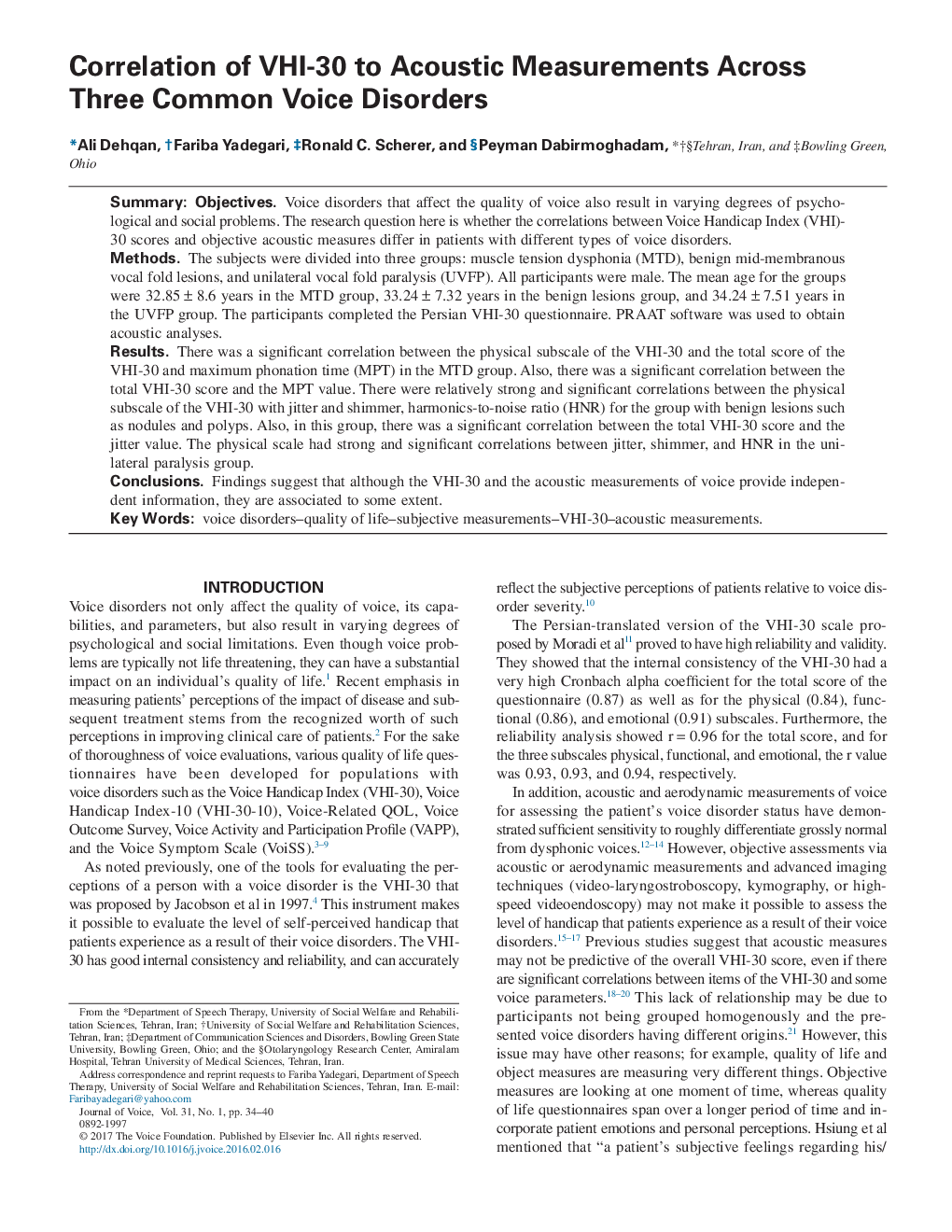| Article ID | Journal | Published Year | Pages | File Type |
|---|---|---|---|---|
| 5124299 | Journal of Voice | 2017 | 7 Pages |
SummaryObjectivesVoice disorders that affect the quality of voice also result in varying degrees of psychological and social problems. The research question here is whether the correlations between Voice Handicap Index (VHI)-30 scores and objective acoustic measures differ in patients with different types of voice disorders.MethodsThe subjects were divided into three groups: muscle tension dysphonia (MTD), benign mid-membranous vocal fold lesions, and unilateral vocal fold paralysis (UVFP). All participants were male. The mean age for the groups were 32.85â±â8.6 years in the MTD group, 33.24â±â7.32 years in the benign lesions group, and 34.24â±â7.51 years in the UVFP group. The participants completed the Persian VHI-30 questionnaire. PRAAT software was used to obtain acoustic analyses.ResultsThere was a significant correlation between the physical subscale of the VHI-30 and the total score of the VHI-30 and maximum phonation time (MPT) in the MTD group. Also, there was a significant correlation between the total VHI-30 score and the MPT value. There were relatively strong and significant correlations between the physical subscale of the VHI-30 with jitter and shimmer, harmonics-to-noise ratio (HNR) for the group with benign lesions such as nodules and polyps. Also, in this group, there was a significant correlation between the total VHI-30 score and the jitter value. The physical scale had strong and significant correlations between jitter, shimmer, and HNR in the unilateral paralysis group.ConclusionsFindings suggest that although the VHI-30 and the acoustic measurements of voice provide independent information, they are associated to some extent.
